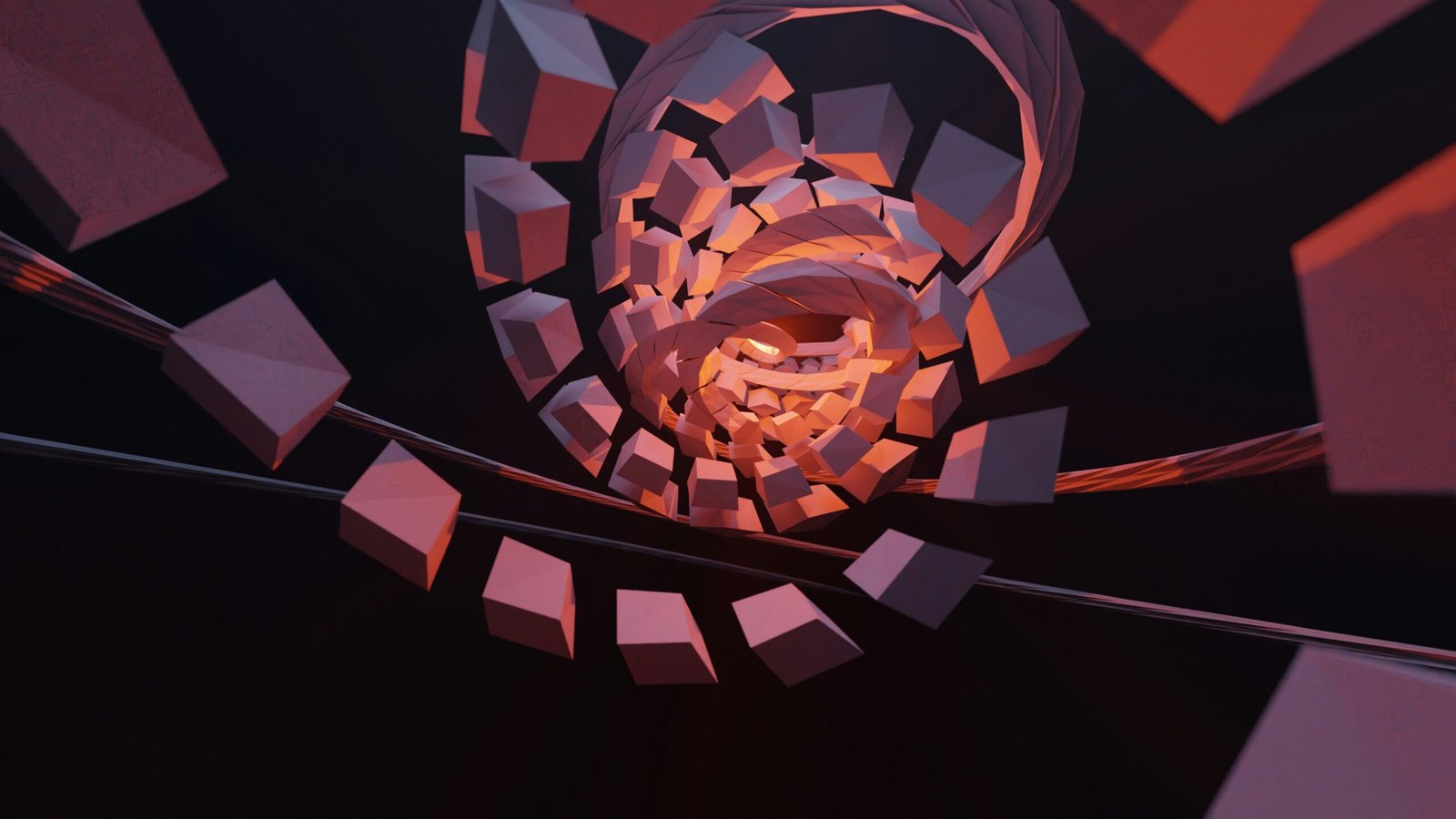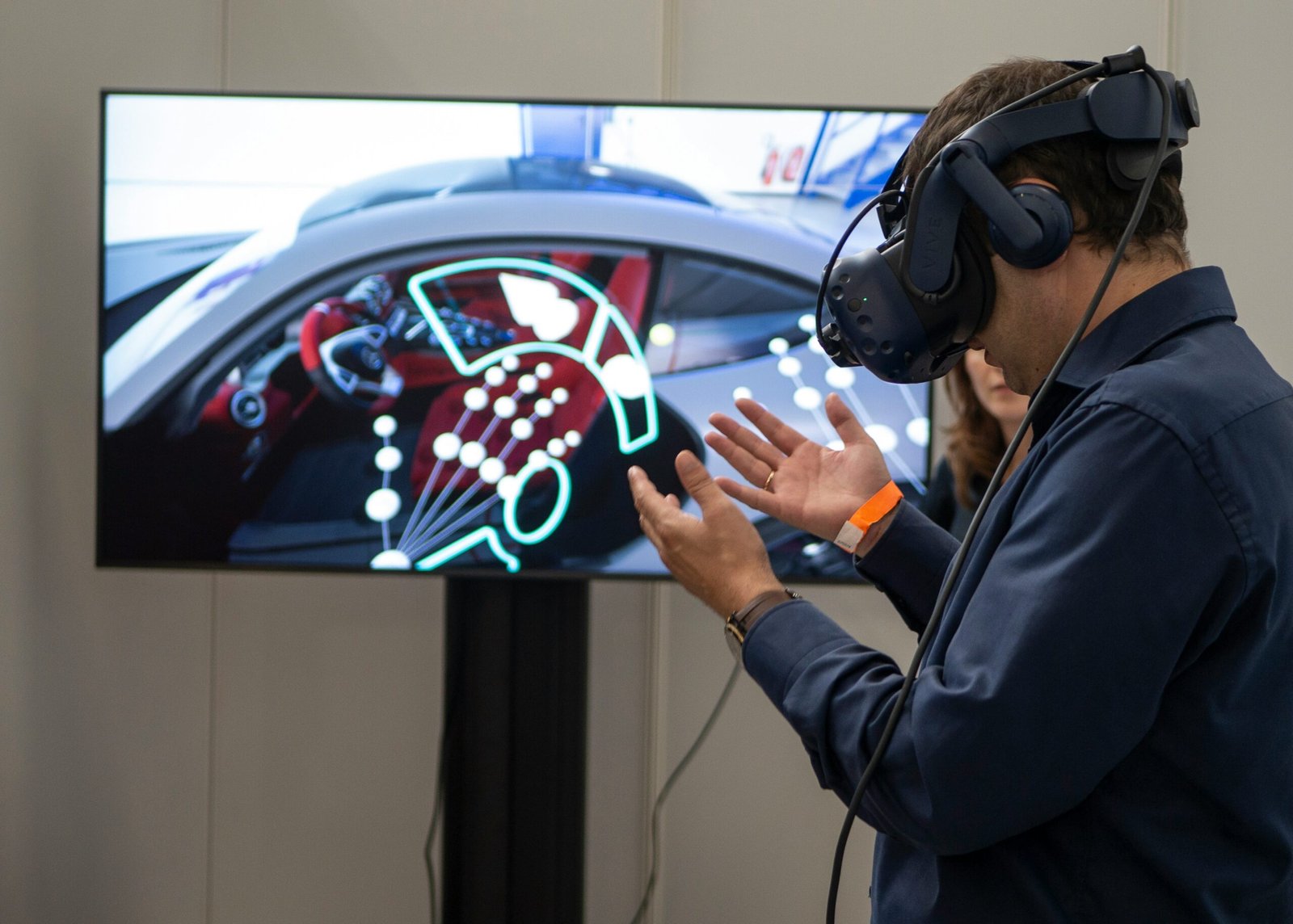Introduction to Augmented Reality
Augmented reality (AR) represents a pivotal development in the realm of technology, merging the physical world with digital enhancements. This innovative approach allows users to augment their environment through a blend of digital elements such as 3D models, animations, or information overlays, thereby transforming their interaction with the real world. Unlike virtual reality (VR), which immerses users in a completely simulated environment, AR enhances the existing surroundings, allowing for a more integrated experience that reflects and interacts with real-life contexts.
The significance of AR extends beyond mere technological advancements; it symbolizes a fascinating intersection of reality and imagination. In a world where digital experiences are becoming increasingly prevalent, AR invites us to reconsider our perceptions of reality. By overlaying digital content onto the physical world, AR not only enriches our immediate experiences but also poses profound questions about the nature of reality itself. As individuals engage with augmented elements in their surroundings, they may find their understanding of the environment altered, leading to a unique cognitive interplay between the actual and the augmented.
From practical applications in fields such as education, healthcare, and gaming to philosophical implications regarding existence and authenticity, AR prompts a multifaceted exploration. It showcases the capacity of technology to redefine human experiences and expand the scope of our interactions with the world. As we delve deeper into the layers of augmented reality, it becomes essential to reflect on how these advancements influence our daily lives and tackle philosophical questions surrounding perception, truth, and the human experience. Augmented reality is not merely a tool; it is a gateway to new understandings of the interplay between technology, philosophy, and science.
The Fundamental Principles of Augmented Reality
Augmented Reality (AR) represents a transformative technological frontier, where digital information converges with the physical environment to create immersive experiences. At its core, AR is grounded in the integration of real-world elements with virtual content, fostering a seamless interaction that enhances the perception of reality. This synthesis relies on multiple fundamental principles, with computer vision, tracking, and display technologies being paramount to its implementation.
One of the primary aspects of augmented reality is the ability to overlay digital content onto the real world. This is achieved through sophisticated computer vision algorithms, which enable the system to analyze and interpret the physical surroundings. For instance, AR applications can utilize cameras and sensors to identify surfaces, objects, and even user gestures. By doing so, these applications can determine appropriate placement and interaction points for virtual elements.
Moreover, tracking systems play a crucial role in ensuring that digital objects maintain a consistent position relative to their real-world counterparts. Techniques such as simultaneous localization and mapping (SLAM) allow devices to map unknown environments while tracking their location within that space. This impressive capability is essential for creating a coherent augmented experience, preventing disruptions that could detract from user engagement.
Furthermore, the display technologies employed in augmented reality provide the necessary interface for users to perceive these enhancements. Devices such as smart glasses and smartphones utilize screens to project virtual information. Advanced displays not only render realistic graphics but also adapt to user influence and environmental changes, creating a dynamic interplay between the physical and digital realms.
Through these principles, augmented reality goes beyond mere visualization; it catalyzes interactive experiences that facilitate learning, gaming, and practical applications across various sectors. Thus, the foundational elements of AR fundamentally shape how users engage with and interpret the intertwining worlds of digital and physical content.
Real-World Applications of Augmented Reality
Augmented Reality (AR) has evolved significantly over the years, leading to its adoption across various sectors. One of the most notable fields benefiting from AR technology is education. By integrating virtual elements into real-world learning environments, educators can create immersive experiences that enhance student engagement and comprehension. For example, using AR applications, students can explore complex subjects such as anatomy, allowing them to visualize the human body in 3D, fostering a more interactive learning process. This immersive educational tool not only captures attention but also aids in information retention.
In the healthcare sector, AR has been revolutionizing the approach to patient care and surgical procedures. One prominent application is in surgical simulations, where AR can overlay critical information directly onto the surgeon’s field of view. This technology enhances precision and decision-making, potentially reducing risks associated with complex surgeries. Moreover, medical training has become more effective, as student doctors can practice in a controlled environment that mimics real-life scenarios, effectively bridging theoretical knowledge and practical application.
The entertainment industry has also embraced augmented reality, primarily through gaming. Popular AR games like Pokémon GO have captivated millions by encouraging players to interact with their physical surroundings while engaging in a virtual phenomenon. This blending of reality and digital gameplay not only entertains but also promotes physical activity and social interaction among players, enhancing the overall gaming experience and creating a new avenue for community engagement.
Furthermore, AR applications extend to fields such as retail, where customers can visualize products in their own space before making a purchase. This innovation enhances the shopping experience by reducing uncertainty and enhancing product visibility. As AR continues to develop, its potential applications seem virtually limitless, signifying a transformative shift in how we interact with the world.
Philosophical Perspectives on Reality and Augmented Reality
The concept of reality has long been a subject of philosophical inquiry, raising profound questions about perception, existence, and the nature of truth. When examining augmented reality (AR), which overlays digital information onto the physical world, these philosophical discussions take on new significance. The inquiry into what constitutes ‘real’ becomes especially pertinent in an age where our sensory experiences can be manipulated through technology.
One pertinent philosophical perspective comes from René Descartes, whose famous dictum “Cogito, ergo sum” suggests that the act of doubt implies a thinker’s existence. In a world enriched by augmented reality, this leads one to question the essence of existence itself: if we can perceive layers of information that transcend our physical environment, to what extent can we consider those perceptions as part of our reality? Could our understanding of existence be fundamentally altered by these digitally enhanced experiences?
Moreover, Immanuel Kant’s distinction between phenomena (the world as we experience it) and noumena (the world as it is) becomes particularly relevant. With AR, the line separating our sensory experiences from ‘true’ reality blurs, challenging the very framework through which we engage with our world. If augmented layers can significantly influence our perceptions, what implications does this have for our grasp on knowledge and reality?
Furthermore, the contemporary philosopher David Chalmers has articulated the ‘hard problem of consciousness,’ which questions how subjective experiences arise from physical processes. In the context of augmented reality, this problem intensifies as we consider how the merging of digital and physical realms alters subjective experience. The layers of AR can enhance or distort our engagement with the world, prompting a reevaluation of what we deem as real.
Ultimately, these philosophical perspectives invite us to think critically about our interaction with augmented reality, challenging our beliefs about perception, existence, and the essence of reality itself.
The Science Behind Augmented Reality Technologies
Augmented Reality (AR) technologies represent a fascinating intersection of various scientific disciplines, primarily focusing on sensors, artificial intelligence (AI), and machine learning (ML). At its core, AR enhances the physical world by superimposing digital information onto the real environment, creating an interactive experience for users. To achieve this, several key components work in harmony to create seamless integration between the digital and physical realms.
Sensors play a crucial role in AR systems, as they collect data about the user’s surroundings and movements. These sensors include cameras, accelerometers, and gyroscopes, each providing essential information that AR systems utilize to understand their environment. For example, cameras capture real-time images while accelerometers measure device motions, enabling accurate placement of digital overlays in relation to the physical world. This precise spatial awareness is fundamental for delivering an immersive AR experience.
Artificial intelligence further enhances AR technologies by enabling systems to interpret and analyze data collected from sensors. Through AI algorithms, AR applications can recognize objects, track movements, and even understand user interactions. This application of AI is crucial for creating realistic and responsive experiences, as it allows digital elements to adapt based on user inputs and environmental conditions. Additionally, machine learning algorithms are used an integral part of the process, where they continuously improve the system’s ability to recognize patterns and make predictions based on past data.
As AR technologies evolve, they continue to integrate more advanced features driven by scientific innovation. The collaboration of sensors, artificial intelligence, and machine learning offers immense potential for applications across various sectors, including education, healthcare, and entertainment. By understanding the underlying science, we can appreciate the transformative impact that augmented reality holds for the future.
The Impact of Augmented Reality on Human Experience
Augmented Reality (AR) has rapidly evolved, shaping the way individuals engage with the environment and influencing human experience across various dimensions. Its integration into daily life brings forth significant psychological, social, and cultural implications that merit consideration.
On a psychological level, AR can enhance cognitive engagement, providing immersive experiences that stimulate learning and memory retention. For example, educational applications use AR to transform traditional learning environments into interactive experiences. This not only caters to diverse learning styles but also increases motivation, allowing users to engage deeply with educational content. Conversely, the profound immersion offered by AR may lead to cognitive overload, potentially hindering individual processing abilities. Thus, striking a balance in its implementation becomes vital to foster positive psychological outcomes.
Socially, AR reshapes interactions among individuals. By blending digital elements into the physical world, it creates opportunities for shared experiences that enhance social connectivity. Social AR applications allow users to communicate in real-time, layering their interactions with dynamic content and improving the richness of conversation. However, this newfound connectivity raises concerns regarding the authenticity of communication. As users increasingly interact through augmented lenses, the nature of relationships may shift, prompting questions about genuine human connection in a technologically saturated landscape.
Culturally, AR serves as a platform for expression, allowing diverse communities to create and share content that reflects their identities. This fosters cultural exchange and awareness but also risks cultural homogenization, where dominant narratives overshadow local voices. The challenge lies in leveraging AR technology conscientiously to cultivate inclusivity and mitigate adverse cultural effects while celebrating the richness of human diversity.
Ultimately, the multifaceted impact of augmented reality on human experience beckons a thoughtful exploration of its implications. As society navigates through this technological evolution, it becomes essential to critically analyze how AR reshapes our perceptions, interactions, and cultural landscapes.
Future Trends in Augmented Reality
The landscape of augmented reality (AR) is poised for significant evolution as technological advancements continue to reshape various facets of society. With the rapid pace of innovation, one can expect AR to permeate daily life, influencing personal experiences, commerce, and education in unprecedented ways. One of the most impactful trends will likely be the integration of AR into smart glasses and wearable technology, enabling users to interact with their environment seamlessly. This shift towards hands-free interfaces will enhance convenience and accessibility, allowing individuals to access information in real-time without the distraction of traditional screens.
In business settings, augmented reality has the potential to revolutionize practices through enhanced collaboration and training. For instance, companies may utilize AR for remote assistance, enabling experts to guide on-site personnel via interactive holograms. This will not only reduce operational downtime but also foster a collaborative spirit that spans geographical barriers. Moreover, training programs can incorporate AR simulations, empowering employees to gain practical experience in a controlled setting. The demand for such applications is likely to rise as industries seek efficient solutions amidst an increasingly competitive landscape.
Furthermore, education stands to gain considerably from AR’s integration. Educators can leverage AR to create immersive learning experiences that make complex concepts more tangible. For example, students studying history could virtually explore ancient civilizations, while those in the sciences might engage in interactive laboratory experiments. This hands-on approach fosters deeper understanding and engagement, ultimately leading to improved educational outcomes.
As augmented reality continues to evolve, its impact on society is bound to expand. Innovations will drive a transformation in how we work, learn, and connect with one another. By embracing these technological advancements, we can envision a future shaped by augmented realities that enhance our understanding of the world around us.
Ethical Considerations Surrounding Augmented Reality
Augmented reality (AR) technologies are revolutionizing the way individuals interact with their surroundings, offering immersive experiences that blend the physical and virtual worlds. However, this integration raises pressing ethical concerns that warrant careful examination. Privacy is a primary issue, as AR applications often require extensive data collection and user tracking to function effectively. Users may unknowingly share personal information, which can be exploited by companies or malicious entities. Ensuring that user privacy is respected requires robust protocols and transparent practices from AR developers.
Data security is another critical aspect of the ethical landscape in augmented reality. As AR systems gather various types of data, including location and behavioral analytics, the potential for security breaches increases. Hackers could target AR platforms, gaining unauthorized access to sensitive information. Developers must prioritize cybersecurity measures and design systems that safeguard users against potential threats, ensuring robust encryption and secure data storage solutions are in place.
Moreover, the issue of consent raises questions about users’ understanding and acceptance of how their data is being used. When engaging with AR technologies, individuals must be made aware of the implications of their participation. This involves not only obtaining explicit consent but also providing comprehensive information about how their data will be utilized. Ethical AR development necessitates a commitment to informed consent practices that empower users to make knowledgeable decisions about their engagement with such technologies.
Ultimately, the onus is on creators and users to cultivate a responsible AR environment. As augmented reality becomes more prevalent, embracing a framework that prioritizes ethical considerations is imperative. This encompasses approaching AR not merely as a technological tool but as a shared social responsibility, where careful thought and consideration are paramount in ensuring beneficial outcomes for individuals and society as a whole.
Conclusion: Embracing the Augmented Reality Experience
Throughout our exploration of augmented reality (AR), it has become increasingly clear that this technological advancement serves as a transformative force reshaping human experiences across various domains. As we have observed, augmented reality transcends traditional boundaries, merging digital elements with the physical world, which opens a myriad of possibilities for interaction, education, and entertainment. The potential for AR to enhance our daily lives is profound, making it imperative for us to embrace and understand these changes.
Moreover, the philosophical implications of augmented reality cannot be overlooked. As AR continues to evolve, it challenges our perceptions of reality, existence, and the interplay between the digital and the tangible. The journey through augmented experiences urges individuals to navigate a new landscape where the real and the virtual coalesce, prompting deeper reflections on the nature of our interactions and the implications of an increasingly mediated life. How do we discern what is real in an age of such potent digital facsimiles? This question exemplifies the introspective journey that AR invites us to undertake.
As we stand on the threshold of a future rich in augmented potential, one might ponder the ethical considerations associated with this technology. What responsibilities come with the power to alter perceptions and realities? Furthermore, as AR becomes more integrated into our lives, how might it influence societal norms and human connections? These open-ended inquiries serve to ignite curiosity and encourage critical thought about the impending developments in augmented reality.
Ultimately, as we embrace augmented reality, it becomes essential to remain vigilant and reflective. This evolving landscape is not only a testament to human innovation but also a reminder of the profound impact that technology has on our existence. Let us continue to explore and question the unfolding journey of augmented reality, fostering a dialogue that considers both the possibilities and the ethical dimensions associated with this remarkable technology.






